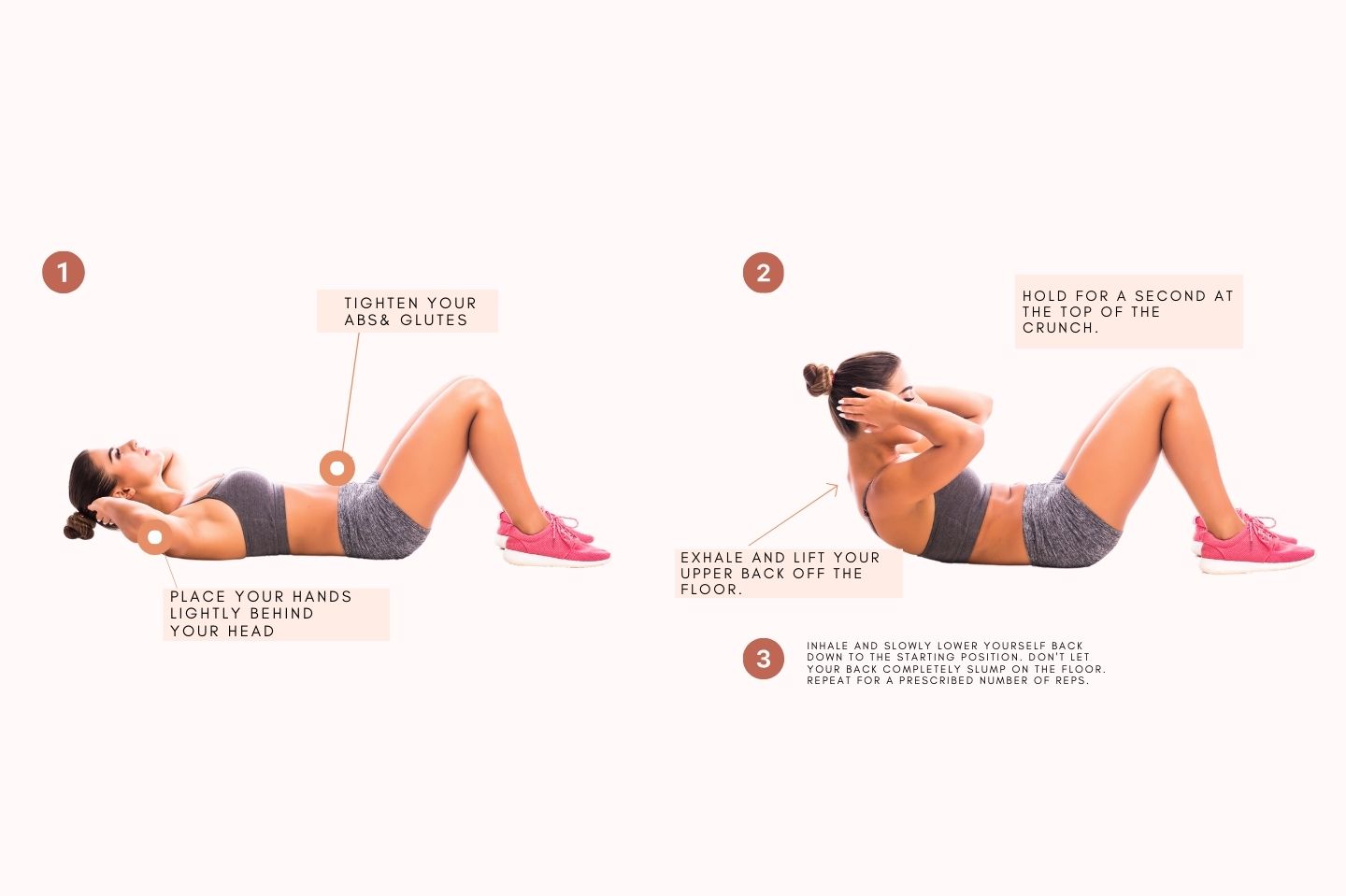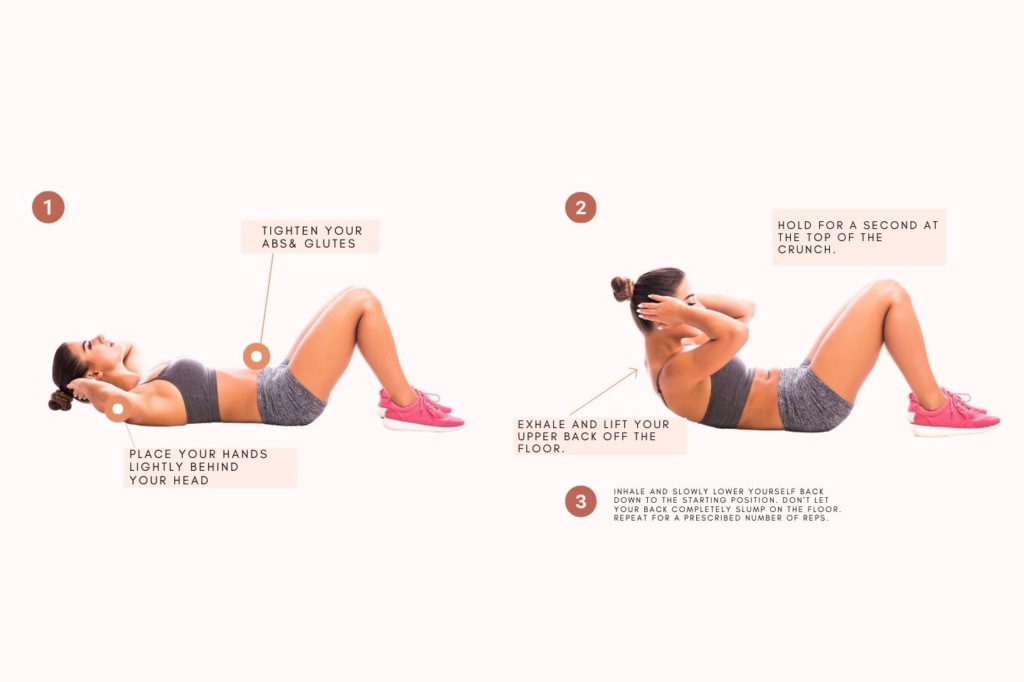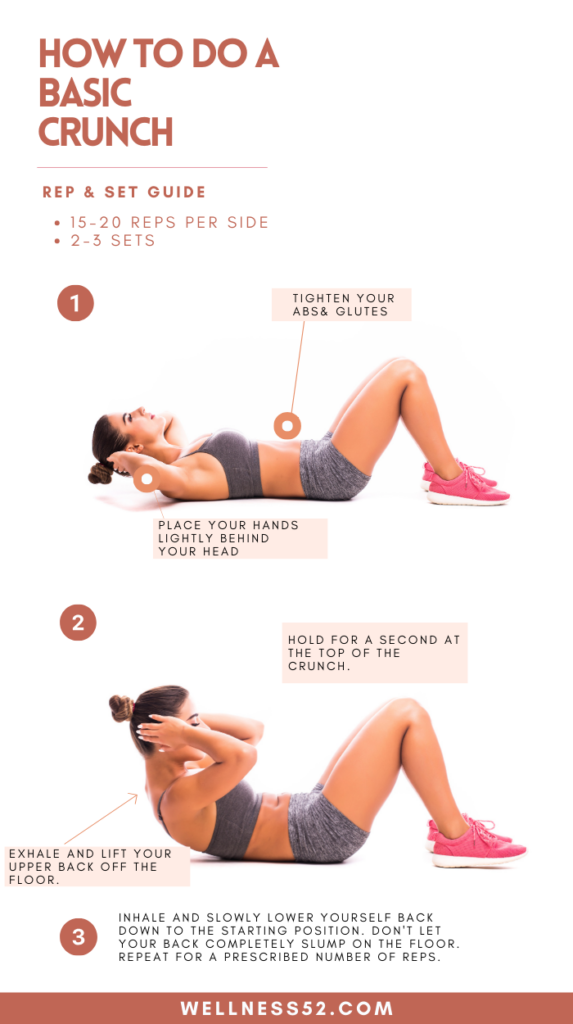
Crunches have been a cornerstone of abdominal workouts for ages, targeting the rectus abdominis, the prominent muscle responsible for the coveted six-pack appearance along the front of the torso.
Strengthening this muscle is pivotal for enhancing core stability and overall performance, making crunches a valuable addition to both core-focused routines and comprehensive full-body workouts.
Beyond sculpting the six-pack, a strong core is essential for posture, stability, and overall fitness.
In this article, we’ll explore the advantages and drawbacks of crunches while providing instructions on the proper form to maximize effectiveness and reduce the risk of injury.
Benefits of Crunches:

- Strengthens your core: A strong core improves balance, and stability, and protects your spine during everyday activities.
- Reduces back pain: Weak core muscles can contribute to back pain. Strengthening your core helps support your lower back.
- Improves posture: Crunches help engage your core muscles, which can lead to better posture.
- Defines your abs: While crunches won’t give you a six-pack on their own (spot reduction is a myth!), they can help tone and define your abdominal muscles.
How to Do a Perfect Crunch:

- Lie flat on your back with your knees bent and feet flat on the floor, hip-width apart. You can place a yoga mat or exercise mat under your back for comfort.
- Cross your arms gently over your chest, or place your hands lightly behind your head with your elbows out wide. Avoid pulling on your neck with your hands.
- Engage your core by pressing your lower back into the floor. Inhale as you prepare to lift.
- Exhale and lift your upper back off the floor, initiating the movement with your abs. Think about bringing your belly button towards your spine.
- Keep your chin slightly tucked and avoid straining your neck. Your gaze should be pointed slightly upwards towards the ceiling.
- Lift until your shoulder blades come off the ground, but don’t pull on your neck to lift higher. Hold for a second at the top of the crunch.
- Inhale and slowly lower yourself back down to the starting position. Don’t let your back completely slump on the floor.
Tips for Perfect Form:
- Focus on quality over quantity. It’s better to do fewer crunches with proper form than many with poor form.
- Don’t arch your back. Keep your lower back pressed into the floor throughout the movement.
- Don’t jerk your neck. Use your abs to lift your upper back, not your neck.
- Breathe properly. Exhale as you lift and inhale as you lower yourself down.
- Don’t hold your breath. Holding your breath can increase blood pressure.
Variations of the Crunch:
- Reverse crunch: Lie on your back with legs extended. Lift your heels off the floor and bring your knees towards your chest, engaging your abs.
- Bicycle crunch: Lie on your back with hands behind your head. Lift one shoulder blade off the floor and twist your torso to bring the opposite elbow towards your knee. Repeat on the other side.
Conclusion:
The crunch is a simple yet effective exercise that can strengthen your core and improve your overall fitness. By following these tips and focusing on proper form, you can get the most out of this exercise and avoid any potential injuries.
Remember:
- Listen to your body and stop if you feel any pain.
- Consult with a doctor before starting any new exercise program, especially if you have any pre-existing health conditions.
- Combine crunches with other exercises for a well-rounded workout routine.
By incorporating crunches into your workout routine, you can build a stronger, more sculpted core and experience the numerous benefits that come with it.


